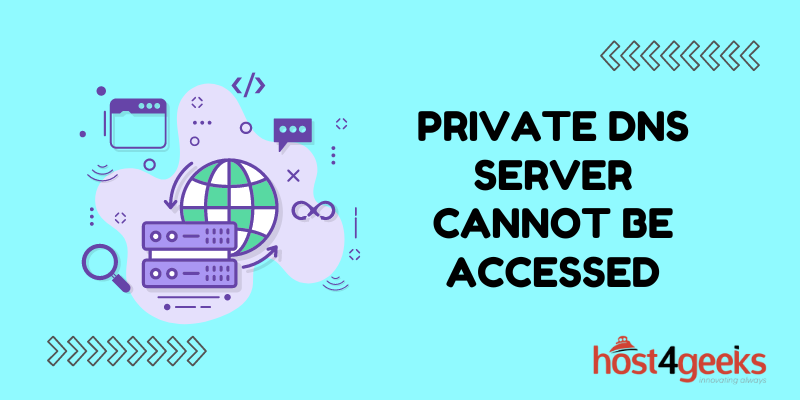In today’s interconnected digital landscape, the domain name system (DNS) serves as a fundamental pillar, translating user-friendly domain names into machine-readable IP addresses. Private DNS servers, a crucial component of this system, offer enhanced security, privacy, and control over network traffic.
However, despite their benefits, users often encounter the frustrating roadblock of the “Private DNS Server Cannot Be Accessed” issue. This frustrating dilemma can lead to disrupted online experiences and hindered access to various websites and services.
But fear not, as this article is here to guide you through the steps to effectively troubleshoot and resolve this problem. Whether you’re a tech-savvy individual or just starting to navigate the world of DNS servers, we’ve got you covered with easy-to-follow solutions to ensure a seamless online journey.
So, buckle up as we embark on our way to troubleshoot and conquer the vexing Private DNS server challenge.
Understanding the Issue: Private DNS Server Inaccessibility
Private DNS servers, known for enhancing privacy and security, are designed to ensure that domain name lookups are conducted over encrypted connections, shielding users from potential eavesdropping and tampering.
However, users may encounter an issue where the Private DNS server cannot be accessed, resulting in an inability to resolve domain names and access websites. This issue often presents itself as a vexing challenge, but fear not, as we’re here to guide you through resolving it effectively.
Potential Causes of the Issue
Network Configuration Conflicts: Sometimes, network configuration conflicts can hinder access to the Private DNS server. This could be due to incompatible settings or misconfigurations that need to be rectified.
Firewall and Security Software: Over-zealous firewall or security software may erroneously block connections to Private DNS servers. Ensuring that the necessary exceptions are in place can help mitigate this issue.
ISP Restrictions: Some Internet Service Providers (ISPs) might have restrictions or policies that interfere with Private DNS connections. This could be a factor, particularly if you’re using DNS-over-TLS or DNS-over-HTTPS.
Router Settings: Incorrect settings within your router can also be a source of trouble. Adjustments might be needed to allow proper communication with the Private DNS server.
Resolving the Issue: Step-by-Step Solutions
Solution 1: Network Configuration Check
- Carefully review your device’s network settings to ensure they are compatible with the Private DNS server.
- Verify that you’re using the correct Private DNS server address provided by your DNS service provider.
Solution 2: Firewall and Security Software Adjustment
- Temporarily disable any firewall or security software and test if the issue is resolved.
- If the issue is resolved after disabling the software, add exceptions for Private DNS server connections to prevent future disruptions.
Solution 3: ISP Interaction
- Contact your ISP’s customer support to inquire about any restrictions they might have regarding Private DNS connections.
- If restrictions exist, discuss potential workarounds or alternative DNS settings.
Solution 4: Router Reconfiguration
- Access your router’s settings page and navigate to the DNS settings section.
- Ensure that the router is configured to use the correct Private DNS server addresses.
- Consider restarting the router after making changes to ensure they take effect.
Advanced Troubleshooting Steps
For those who are technically inclined and comfortable with advanced troubleshooting, here are some additional steps you can take:
- Flush DNS Cache: Clear your device’s DNS cache to eliminate any potentially cached incorrect information.
- DNS-over-TLS or DNS-over-HTTPS: Experiment with different DNS encryption protocols to determine if the issue is protocol-specific.
Remember that each user’s setup and circumstances may differ, so it’s important to approach these steps with caution and ensure you have backups of any critical configurations before making changes.
Conclusion
In the intricate web of digital connectivity, the “Private DNS Server Cannot Be Accessed” issue can be a daunting challenge. However, armed with the knowledge and solutions provided in this guide, you’re equipped to tackle the issue head-on.
By addressing potential causes ranging from network configuration to security software adjustments, and even delving into advanced troubleshooting, you can navigate the labyrinth of connectivity issues with confidence.
No longer shall the enigma of an inaccessible Private DNS server stand between you and seamless online experiences. Follow the steps outlined above, and empower yourself with the ability to conquer connectivity challenges effectively.

One thought on “How to Solve the “Private DNS Server Cannot Be Accessed” Issue?”
Thamks